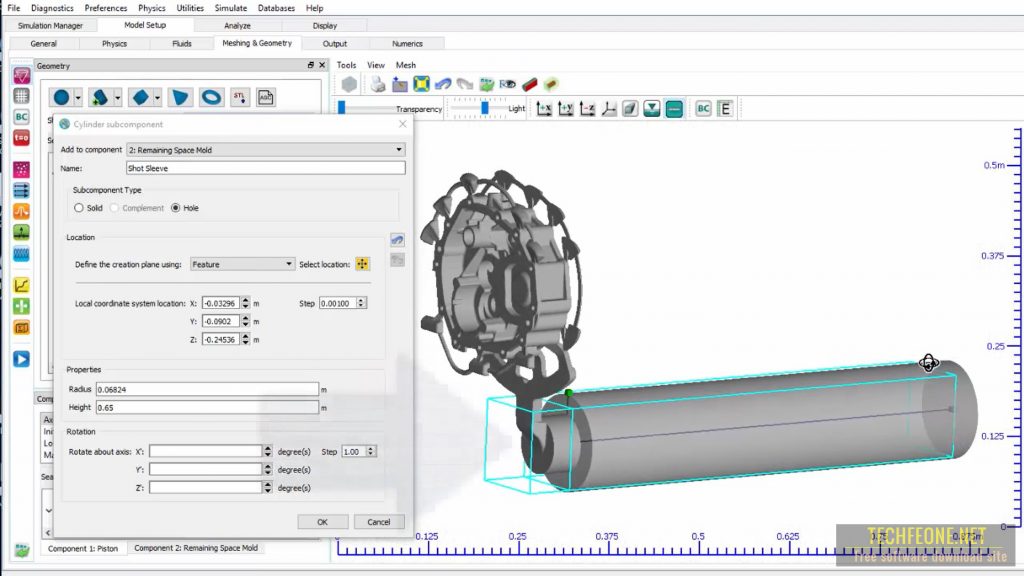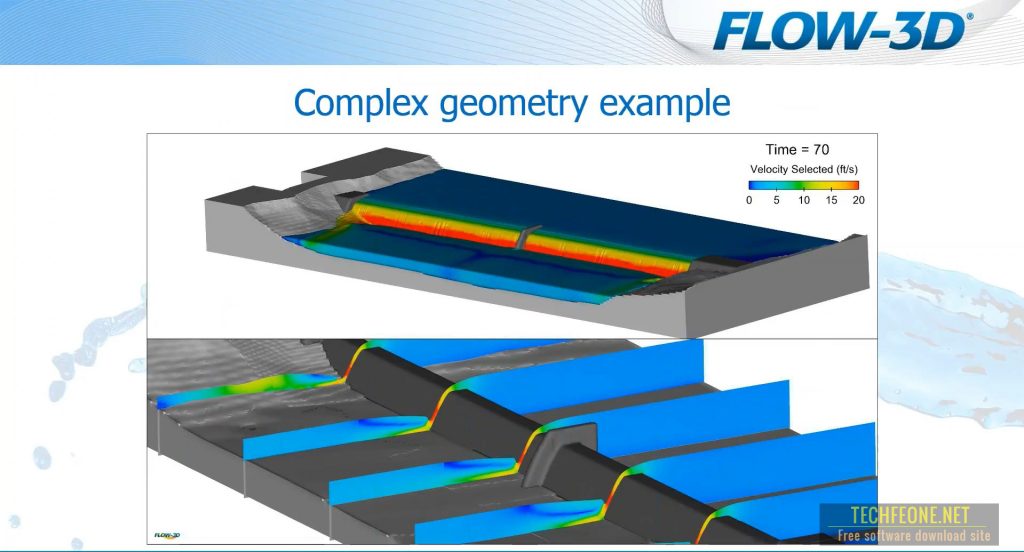Table of Contents
Flow Science FLOW-3D 11.2 Overview
Flow Science FLOW-3D 11.2 is a powerful computational fluid dynamics (CFD) software developed by Flow Science, Inc. It is designed for simulating and analyzing complex fluid flows and heat transfer phenomena. FLOW-3D has a wide range of applications in various industries such as aerospace, automotive, energy, and environmental engineering.

The software uses advanced numerical algorithms to solve the governing equations of fluid dynamics, including the Navier-Stokes equations, which describe the motion of fluids. It also incorporates a variety of physical models for turbulence, multiphase flows, and heat transfer. This allows FLOW-3D to accurately simulate a wide range of fluid flows, including free surface flows, jet flows, and multiphase flows.
FLOW-3D offers a user-friendly interface that allows users to easily set up simulations, define boundary conditions, and visualize results. It also provides extensive post-processing tools for analyzing simulation results, including visualization tools, statistics, and data export capabilities.
FLOW-3D 11.2 has a proven track record of providing accurate and reliable results, making it a trusted tool for engineers and researchers around the world. It is regularly updated with new features and enhancements to improve its capabilities and performance.

Features of Flow Science FLOW-3D 11.2
Key features
- Multiphysics simulation: FLOW-3D is capable of simulating complex multiphysics problems involving fluid dynamics, heat transfer, and other physical phenomena.
- Advanced turbulence modeling: FLOW-3D incorporates advanced turbulence models such as Large Eddy Simulation (LES) and Reynolds-Averaged Navier-Stokes (RANS) to accurately simulate turbulent flows.
- Comprehensive material models: Offers a wide range of material models for fluids, solids, and multiphase mixtures, including non-Newtonian fluids, compressible fluids, and viscoelastic materials.
- Free surface modeling: The software can simulate free surface flows such as waves, sloshing, and fluid-structure interactions.
- Heat transfer modeling: The software can simulate heat transfer phenomena such as conduction, convection, and radiation.
- Multiphase flow modeling: This software can simulate multiphase flows involving multiple fluid phases, as well as mixtures of fluids and solids.
- User-friendly interface: FLOW-3D offers a user-friendly interface that enables easy setup of simulations, definition of boundary conditions, and visualization of results.
- High-performance computing: The software can be run on high-performance computing (HPC) clusters to enable simulations with large numbers of cells and complex geometries.
- Post-processing tools: Offers extensive post-processing tools for analyzing simulation results, including visualization tools, statistics, and data export capabilities.
New features
- Advanced thermal solver: FLOW-3D 11.2 introduces a new thermal solver that provides accurate and efficient simulations of heat transfer in complex geometries. This solver can handle convection, conduction, and radiation heat transfer, and includes advanced models for phase change and melting/solidification.
- Improved meshing capabilities: Includes improved meshing capabilities that enable more accurate and efficient simulations. The software now offers better control over mesh size and distribution, as well as improved surface meshing algorithms.
- Enhanced particle tracking: This version offers enhanced particle tracking capabilities that enable accurate simulation of particle trajectories in complex flow fields. The software now includes models for particle-particle and particle-wall collisions, as well as improved models for particle adhesion and erosion.
- New solver algorithms: FLOW-3D 11.2 introduces new solver algorithms that improve simulation accuracy and performance. The software now includes a new pressure correction algorithm and an improved algorithm for handling curved boundaries.
- Advanced flow control: Includes new models for simulating advanced flow control strategies, such as flow actuators and synthetic jets. These models enable engineers to design more efficient and effective flow control systems.
- Improved user interface: FLOW-3D 11.2 offers an improved user interface that makes it easier to set up and run simulations. The software now includes a new simulation tree that organizes simulation settings and results, as well as improved visualization tools for analyzing simulation results.

System requirements
- Operating System: Windows 10, Windows 8.1, Windows 7, or Linux (Red Hat 7.6 or CentOS 7.6)
- Processor: 64-bit Intel or AMD processor with SSE2 support, 2 GHz or faster
- Memory: 8 GB RAM (16 GB recommended)
- Hard Disk: 20 GB of free disk space for installation and temporary files
- Graphics Card: OpenGL-capable graphics card with at least 1 GB of memory (4 GB or more recommended) and support for OpenGL 4.5 or higher
- Monitor: 1920 x 1080 or higher resolution monitor
- Internet Connection: Required for licensing and software updates
- In addition, running large simulations or simulations with high mesh densities may require additional memory, disk space, and computing power. Flow Science also recommends the use of a dedicated graphics card for optimal performance.
Flow Science FLOW-3D 11.2 Setup Technical Specifications
Read the setup information before you start the free download.
- Full Name: Flow Science FLOW-3D v11.2
- Setup File name: Flow_Science_FLOW_3D_11.2_Update_2x64.zip
- Full Setup Size: 442 MB
- Setup Type: Offline Installer / Full Standalone Setup
- Compatible With: 64 Bit (x64)
Download Flow Science FLOW-3D 11.2 for Windows
Flow Science FLOW-3D 11.2 is available for free, with no further strings attached, through the rapid download services provided by Techfeone.net. With one click on the “Download Now” button, you can start the Free Download.
Flow Science FLOW-3D v11.2 Update_2x64
Pass: techfeone.net
Note:
- Whenever a password is required for a packed file, it is always techfeone.net
- Installation instructions are in the downloaded file




